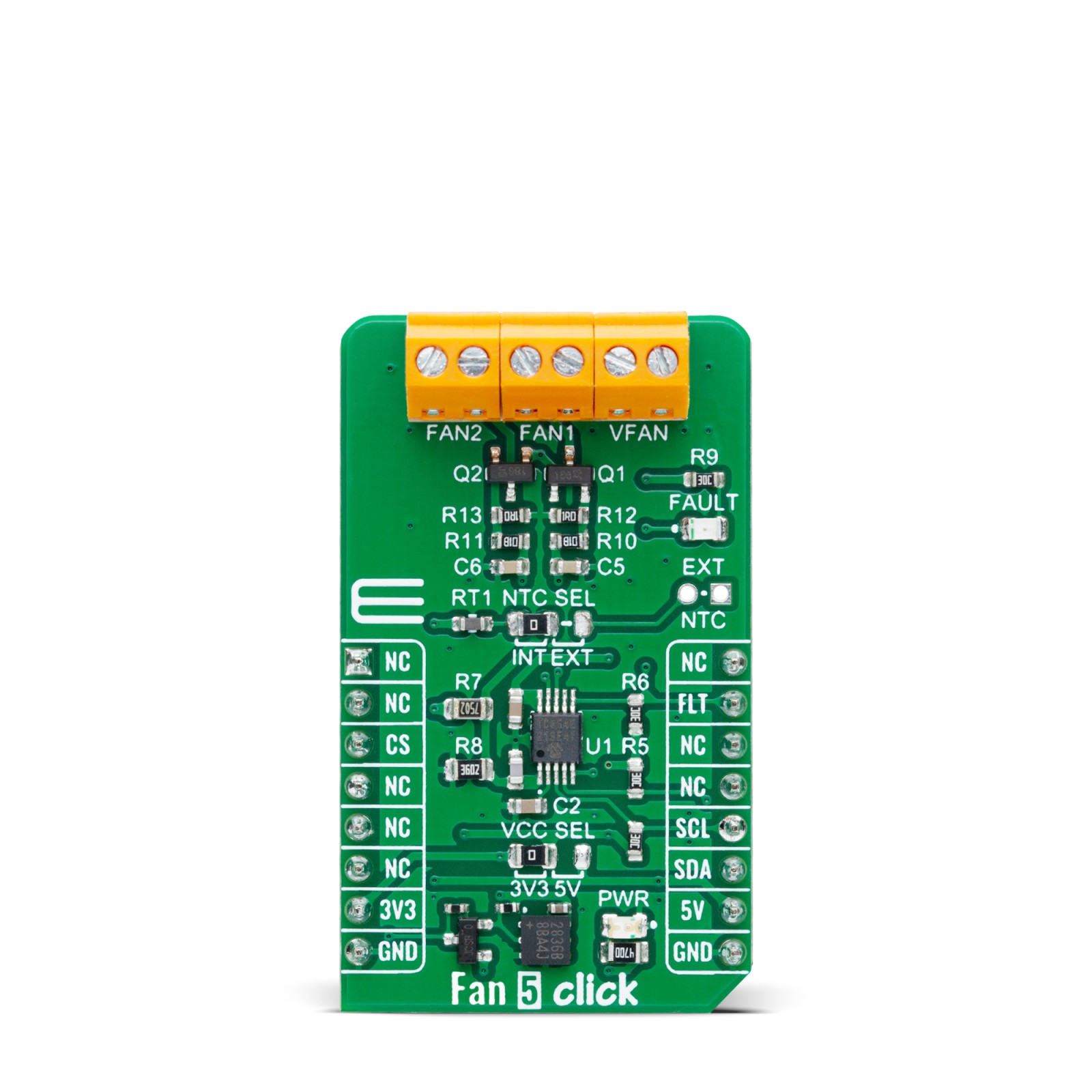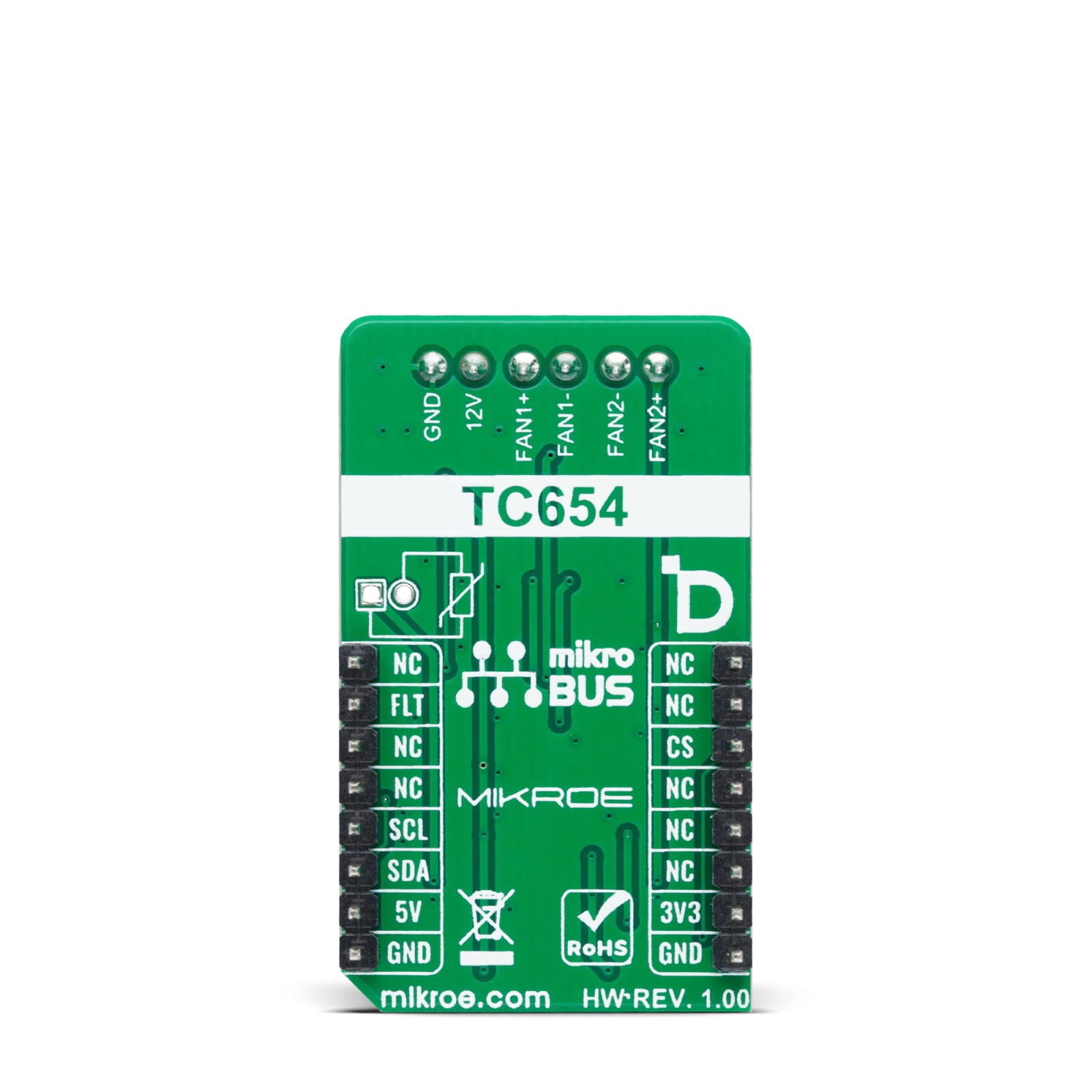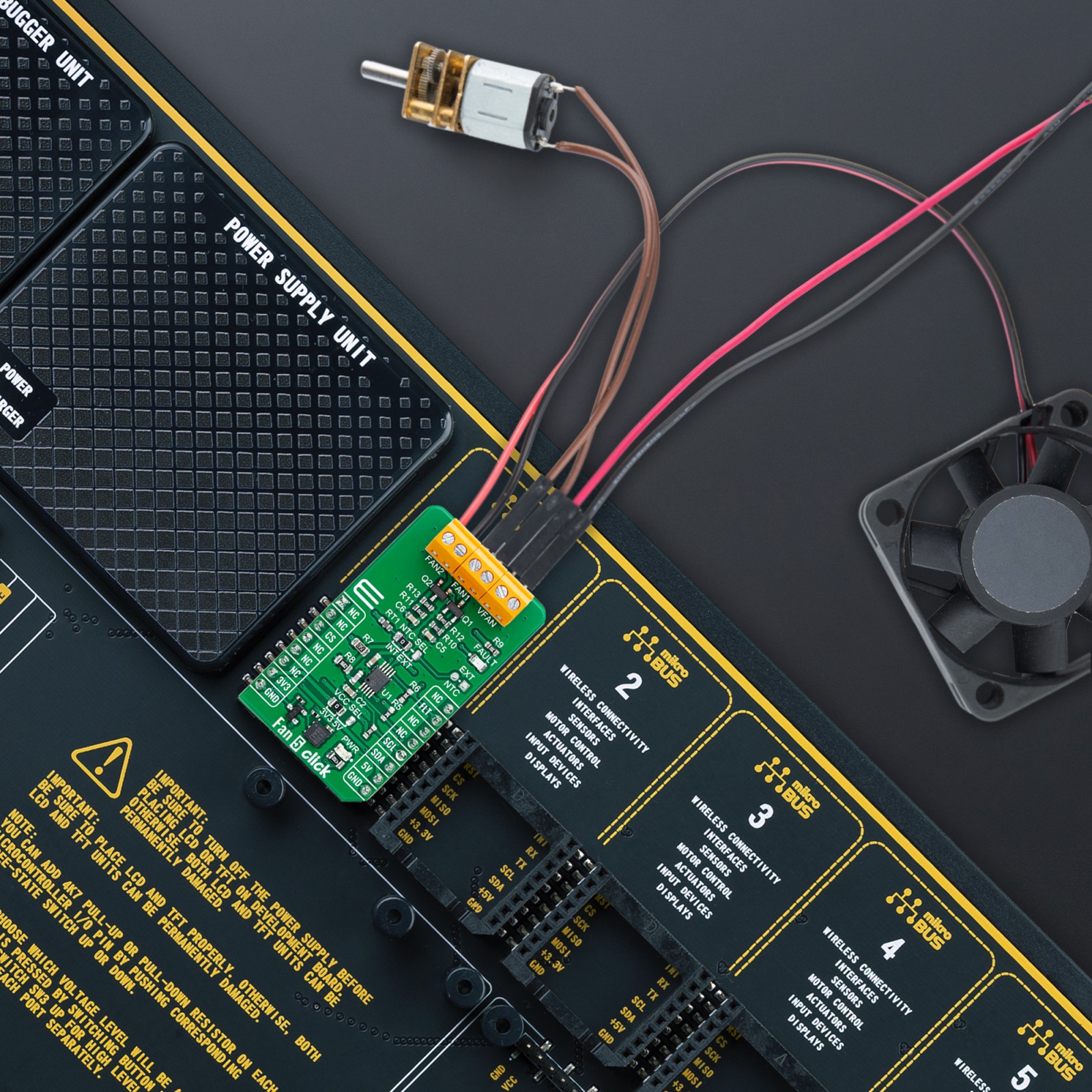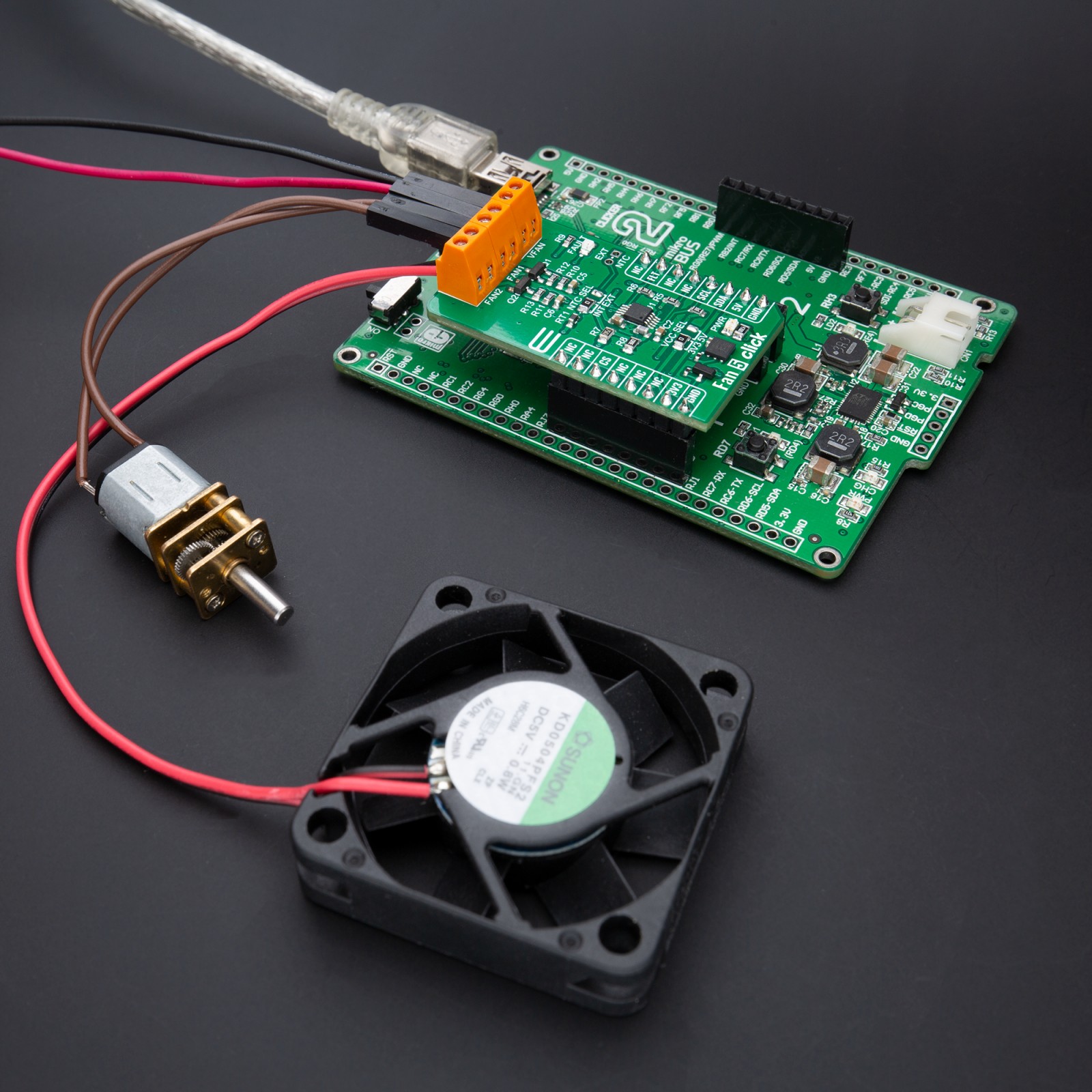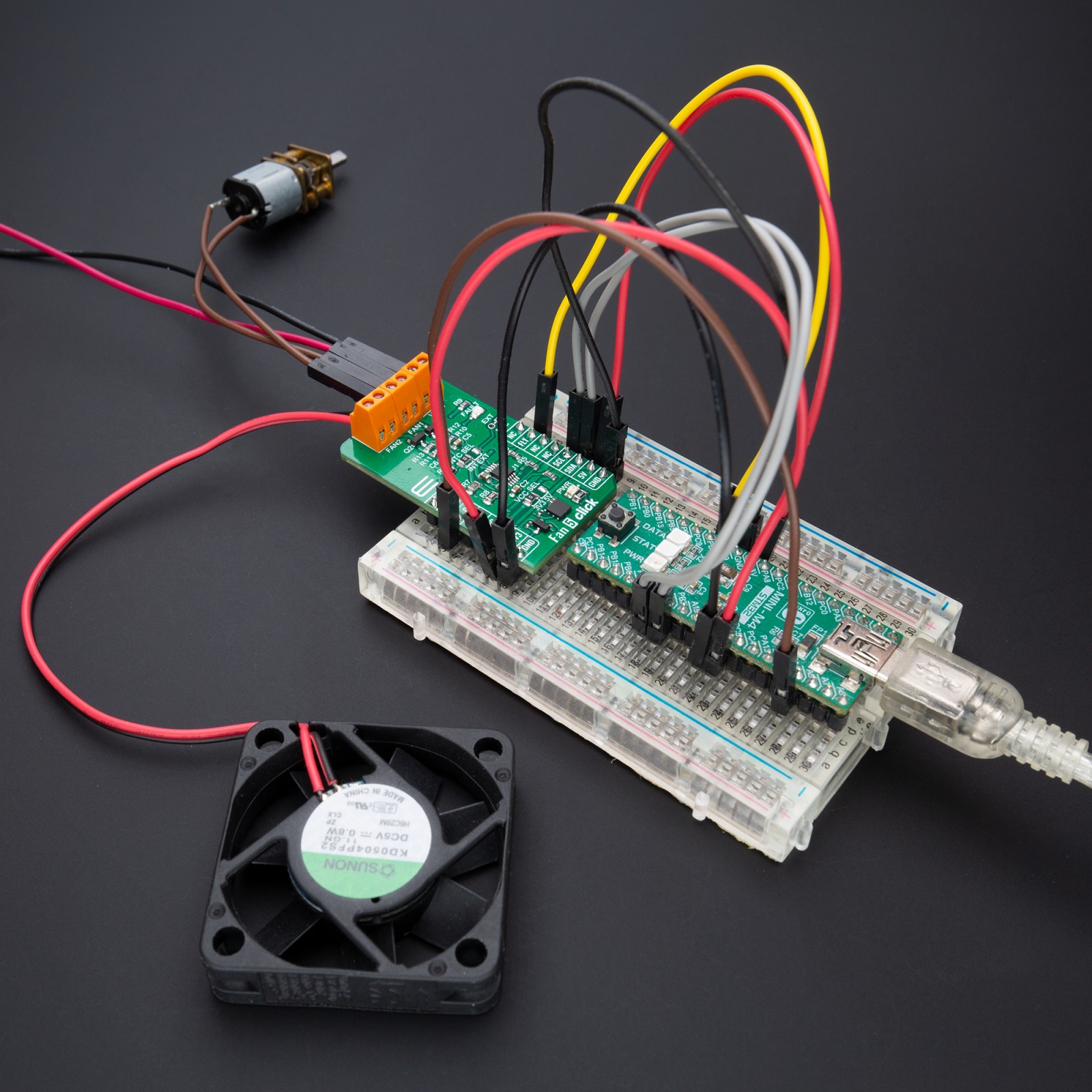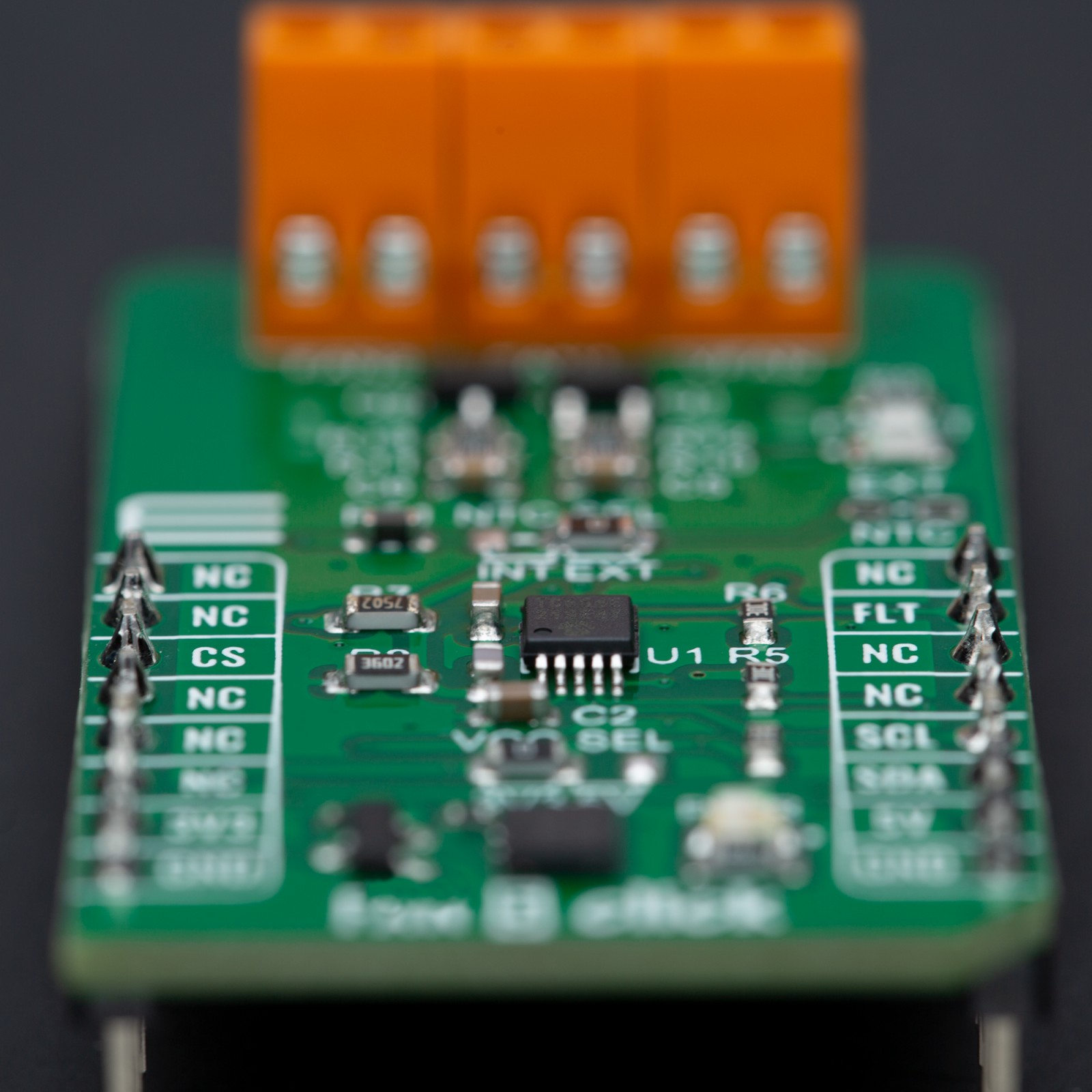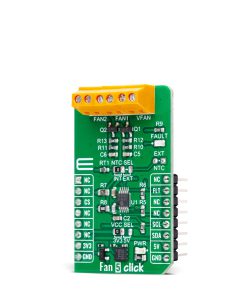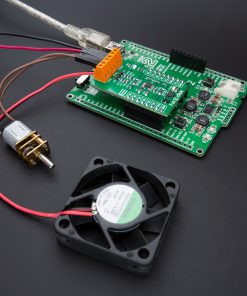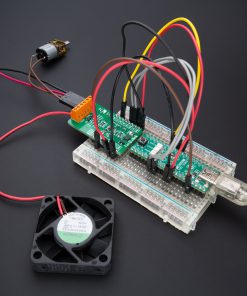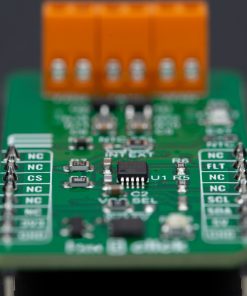Fan 5 Click is a compact add-on board specially designed for fan speed management. This board features Microchip’s TC654, a PWM mode fan speed controller with FanSense™ technology suitable for brushless DC fans. This I2C-configurable controller implements temperature-proportional fan speed control, which reduces acoustic fan noise and increases fan life. It allows the speed control of two cooling fans based on the thermistor temperature or through the I2C-programmed PWM duty cycle. It also has a fan failure indicator to alarm the user when the fan’s RPM falls below the user-set RPM threshold. This Click board™ is a perfect choice for networking equipment, servers, or other applications requiring cooling and temperature control.
Fan 5 Click is fully compatible with the mikroBUS™ socket and can be used on any host system supporting the mikroBUS™ standard. It comes with the mikroSDK open-source libraries, offering unparalleled flexibility for evaluation and customization. What sets this Click board™ apart is the groundbreaking ClickID feature, enabling your host system to seamlessly and automatically detect and identify this add-on board.
 tRF Click
1 × R1,050.00
tRF Click
1 × R1,050.00  3D Motion Click
1 × R1,050.00
3D Motion Click
1 × R1,050.00  DIGI POT Click
1 × R370.00
DIGI POT Click
1 × R370.00  Proximity Click
1 × R220.00
Proximity Click
1 × R220.00 
